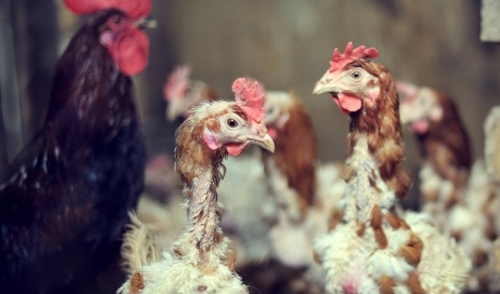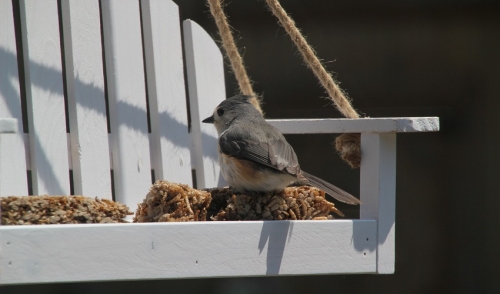Learning About Different Bird Seeds
There are many different types of birdseed, but which is best for your birds and feeders? Understanding the different options and which birds prefer them can...

Molting is an essential part of chickens’ growth and health, but losing and replacing feathers is also a messy, stressful process. Taking steps to help chickens with molting can minimize the stress and keep your backyard flock happy and healthy.
All chickens molt to replace old, broken, and worn out feathers with fresh plumage that will provide better insulation. Young chickens typically have several juvenile molts as they grow to their full size, but won’t begin their regular seasonal molts until they are 12-18 months old. Mature chickens will molt once or twice a year, often with one “soft” molt where only a few feathers may be shed, and one “hard” molt where they will lose almost all their feathers over the course of a few weeks.
When a chicken molts, it is more susceptible to illnesses and injuries, including skin infections. The molting process can be uncomfortable or even painful as new feathers protrude from the skin, and sensitive chickens may become moody, withdrawn, or even aggressive if they are exceptionally stressed. It can take 4-16 weeks for a chicken to molt completely, and during that time a hen’s egg production may be significantly slowed or even stopped depending on her breed, the type of molt she is undergoing, and her overall health.
Molt timing is tied to photoperiod, and chickens may molt both in spring and late summer when the seasons are changing. This timing ensures the birds have the freshest, sturdiest plumage just when they will need it most.
Molting is a natural process, but there are several tricks you can use to make it less stressful on your flock. When you start to notice molting has begun…
One thing never to do for molting chickens is to make them wear sweaters, coats, or other cute “clothes” to protect their skin when they are without feathers. Because their skin is more sensitive when molting, these coverings can increase discomfort and stress the birds out even more. Additionally, feathers may not grow in straight or align properly if they are covered during molting, which can disrupt the birds’ insulation and cause problems long after their molt has finished.
One chicken has an average of 8,000 feathers, and even a small flock may seem to create a feathery explosion as it molts. Shed feathers are a great source of nitrogen for compost piles, or can be left to decay naturally to nourish soil in the yard or garden. If you want to use feathers for other purposes, first collect the feathers in the best condition, then freeze them for several days to kill any bacteria or parasites. Wash the feathers gently to remove any dirt or other debris, and you can then use them for creative projects such as hand-tied fishing lures, homemade cat toys, unique dreamcatchers, or other craft projects.
Molting is a natural part of a chicken’s life, and something you need to be aware of and prepared for whenever you keep a backyard flock. By understanding molting and taking steps to keep your birds healthy and happy through the process, you can help your chickens molt less stressfully and they will soon return to their pre-molting energy and vigor.

Use this coupon to receive 20% Off all in-stock vegetable & flower seeds.
Must present coupon at time of purchase. Not valid with any other discounts or sales.
We currently do not have any events scheduled.

There are many different types of birdseed, but which is best for your birds and feeders? Understanding the different options and which birds prefer them can...
Comments